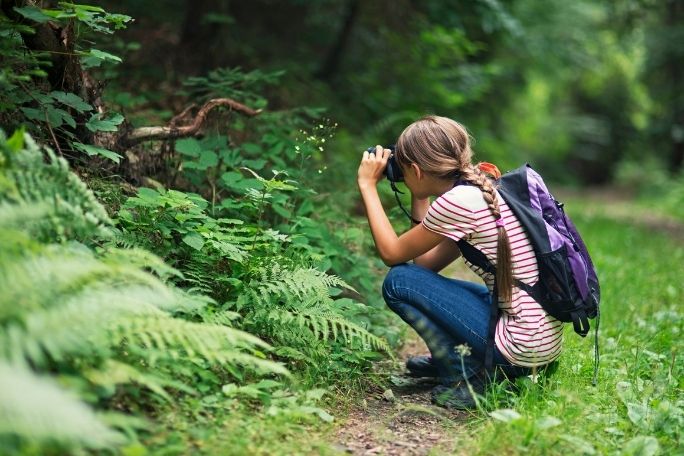Lesson summary
Students explore food chains using local species and Earthwatch’s ClimateWatch citizen science program. Students begin this lesson by investigating how energy flows through a food chain and look at the range of trophic levels that may be present in a food chain. They then work in groups to use the ClimateWatch app to guide research into a species in their local area, and make hypotheses on how climate change might impact these species. Students then create a scientific poster to share their work with the class.
Learning intentions:
Students will...
- understand how food chains can help us comprehend the relationships between species
- understand how climate change might affect species in their local area
Success criteria:
Students can...
- describe what a food chain is, in their own words
- create a food chain
- hypothesise how climate change might affect species in their local area
- create a scientific poster
- use the ClimateWatch app
Lesson guides and printables
Lesson details
Curriculum mapping
Australian curriculum content descriptions:
Year 7 Science:
- Interactions between organisms, including the effects of human activities can be represented by food chains and food webs (ACSSU112)
- Classification helps organise the diverse group of organisms (ACSSU111)
- Summarise data, from students’ own investigations and secondary sources, and use scientific understanding to identify relationships and draw conclusions based on evidence (ACSIS130)
- Communicate ideas, findings and evidence based solutions to problems using scientific language, and representations, using digital technologies as appropriate (ACSIS133)
Year 8 Science:
- Summarise data, from students’ own investigations and secondary sources, and use scientific understanding to identify relationships and draw conclusions based on evidence (ACSIS145)
- Use scientific knowledge and findings from investigations to evaluate claims based on evidence (ACSIS234)
- Communicate ideas, findings and evidence based solutions to problems using scientific language, and representations, using digital technologies as appropriate (ACSIS148)
Syllabus outcomes: SC4-7WS, SC4-8WS, SC4-9WS, SC4-14LW, SC4-15LW.
General capabilities: Critical and Creative Thinking, ICT Capability.
Cross-curriculum priority: Sustainability OI.1, OI.2.
Relevant parts of Year 7 Science achievement standards: Students predict the effect of human and environmental changes on interactions between organisms and classify and organise diverse organisms based on observable differences. They summarise data from different sources, and communicate their ideas, methods and findings using scientific language and appropriate representations.
Relevant parts of Year 8 Science achievement standards: Students use appropriate language and representations to communicate science ideas and findings in a range of text types.
Unit of work: ClimateWatch: Citizen Science – Science – Years 7 & 8.
Time needed: 60 minutes.
Level of teacher scaffolding: Medium – oversee activities and lead students in discussion.
Resources required
- Poster-making materials. Internet access
- Tablets with ClimateWatch app installed
- Enough Scientific Poster Assessment Rubrics for each student to make peer reviews on at least 3 of their peers (reduce paper usage by printing in this sheet in A5, two to an A4 page)
- Student Worksheet – one copy per student
- Device capable of presenting a website to the class
Skills
This lesson is designed to build students’ competencies in the following skills:
- Communication
- Creativity
- Critical thinking
- Digital literacy
Additional info
This lesson has been developed in partnership with Earthwatch. Earthwatch developed the ClimateWatch program with the Bureau of Meteorology and The University of Melbourne to understand how changes in temperature and rainfall are affecting the seasonal behaviour of Australia’s plants and animals.


Welcome back!
Don't have an account yet?
Log in with:
By signing up to Cool.org you consent and agree to Cool's privacy policy to
store, manage and process your personal information. To read more, please see
our privacy policy here(Opens in new tab).
Create your free Cool.org account.
Many of our resources are free, with an option to upgrade to Cool+ for premium content.
Already have an account?
Sign up with:
By signing up to Cool.org you consent and agree to Cool's privacy policy to
store, manage and process your personal information. To read more, please see
our privacy policy here(Opens in new tab).